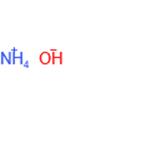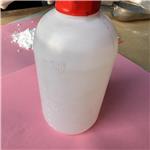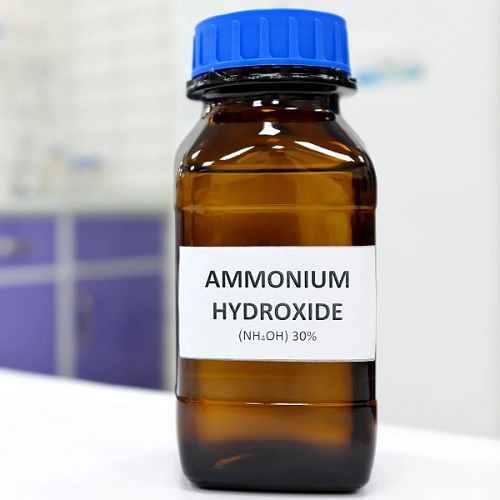- Ammonium hydroxide
-

- $0.00 / 200kg
-
2024-10-29
- CAS:1336-21-6
- Min. Order: 20kg
- Purity: 99%
- Supply Ability: 20 tons
- Ammonium Hydroxide
-

- $9.00 / 1KG
-
2024-10-11
- CAS:1336-21-6
- Min. Order: 1KG
- Purity: 99%
- Supply Ability: 10 ton
- Ammonium hydroxide
-

- $8.00 / 1kg
-
2024-04-08
- CAS:1336-21-6
- Min. Order: 1kg
- Purity: 99%
- Supply Ability: g-kg-tons, free sample is available
Question and answer - Q:What is ammonium hydroxide used for?
- A:Ammonium hydroxide is usually found in concentrations of up to 30% and is used in household cleaners, photography, fertilizers....
- Jul 24����,2024
|
| | Ammonium hydroxide Basic information |
| Product Name: | Ammonium hydroxide | | Synonyms: | Ammonium hydroxide solution >=25% NH3 in H2O, semiconductor grade VLSI PURANAL(TM) (Honeywell 17605);Ammonium hydroxide solution 28% NH3 in H2O, >=99.99% trace metals basis;Ammonium hydroxide solution ACS reagent, 28.0-30.0% NH3 basis;Ammonium hydroxide solution puriss. p.a. plus, >=25% NH3 in H2O;Ammonium hydroxide solution puriss. p.a., reag. ISO, reag. Ph. Eur., ~25% NH3 basis;Ammonium hydroxide solution puriss., 30-33% NH3 in H2O;Ammonium hydroxide solution puriss., meets analytical specification of Ph.Eur., 25-30% NH3 basis;HYPOTONIC LYSIS BUFFER | | CAS: | 1336-21-6 | | MF: | H5NO | | MW: | 35.05 | | EINECS: | 215-647-6 | | Product Categories: | Inorganics;Industrial/Fine Chemicals | | Mol File: | 1336-21-6.mol |  |
| | Ammonium hydroxide Chemical Properties |
| Melting point | -77°C | | Boiling point | 36°C | | density | 0.91 g/mL at 20 °C | | vapor density | 1.2 (vs air) | | vapor pressure | 115 mmHg at 20 °C for 29% solution | | storage temp. | 2-8°C | | solubility | Water (Soluble) | | form | Liquid, Single Sub-Boiling Quartz Distillation | | pka | 9.3(at 25℃) | | Specific Gravity | approximate 0.96 (10%, 15℃) | | color | Colorless | | Odor | Strong pungent ammonia odor detectable at 17 ppm | | PH | 10.09(1 mM solution);10.61(10 mM solution);11.12(100 mM solution); | | explosive limit | 27% | | Water Solubility | Miscible with water. | | λmax | λ: 260 nm Amax: 0.01
λ: 280 nm Amax: 0.01 | | Merck | 14,494 | | BRN | 3587154 | | Stability: | Stable. Incompatible with copper, copper alloys, acids, galvanised iron, zinc, aluminium, bronze, dimethyl sulphate, mercury, alkali metals. | | InChIKey | VHUUQVKOLVNVRT-UHFFFAOYSA-N | | CAS DataBase Reference | 1336-21-6(CAS DataBase Reference) | | EPA Substance Registry System | Ammonium hydroxide (1336-21-6) |
| Hazard Codes | C,N | | Risk Statements | 34-50-22 | | Safety Statements | 26-36/37/39-45-61 | | RIDADR | UN 2672 8/PG 3 | | WGK Germany | 2 | | RTECS | BQ9625000 | | F | 34 | | Autoignition Temperature | 690 °C (for ammonia) | | TSCA | Yes | | HazardClass | 8 | | PackingGroup | III | | HS Code | 28142000 | | Hazardous Substances Data | 1336-21-6(Hazardous Substances Data) | | Toxicity | LD50 oral (rat) 350 mg/kg
PEL (OSHA) 35 ppm (27 mg/m3)
TLV-TWA (ACGIH) 25 ppm (17 mg/m3)
STEL (ACGIH) 35 ppm (27 mg/m3) |
| | Ammonium hydroxide Usage And Synthesis |
| Description | Ammonium hydroxide is a colorless, liquid solution with a characteristic and pungent odor. It is ammonia combined with water. Ammonia (NH3) is a compound consisting of nitrogen and hydrogen. Both ammonia and ammonium hydroxide are very common compounds, found naturally in the environment (in air, water, and soil) and in all plants and animals, including humans. Ammonia is a source of nitrogen, an essential element for plants and animals. Ammonia is also produced by the human body – by our organs and tissues and by beneficial bacteria living in our intestines.

Ammonia plays an important role in protein synthesis in the human body. In brief summary, all living things need proteins, which are comprised of some 20 different amino acids. While plants and microorganisms can synthesize most amino acids from the nitrogen in the atmosphere, animals cannot. For humans, some amino acids cannot be synthesized at all and must be consumed as intact amino acids. Other amino acids, however, can be synthesized by microorganisms in the gastrointestinal tract with the help of ammonia ions. Thus, ammonia is a key player in the nitrogen cycle and in protein synthesis. Ammonia also helps maintain the body's pH balance. | | Chemical Properties | Ammonium hydroxide exists only in the form of an aqueous solution. The compound is prepared by dissolving NH3 in H2O and usually is referred to in industrial trade as aqua ammonia. For industrial procurements, the concentration of NH3 in solution is normally specified in terms of the specific gravity (degrees Baum′e, °Be). Common concentrations are 20 °Be and 26 °Be. The former is equivalent to a sp gr of 0.933, or a concentration of about 17.8% NH3 in solution; the latter is equivalent to a sp gr of 0.897, or a concentration of about 29.4% NH3. These figures apply at a temperature of 60 °F (15.6 °C). Reagent grade NH4OH usually contains approximately 58% NH4OH (from 28 to 30% NH3 in solution). | | Uses | Ammonium hydroxide is widely utilized as a leavening agent or acidity regulator in food production. It serves as a precursor to some alkyl amines and is also used in the tobacco industry for flavor enhancement and as a processing aid. During furniture making, it combines with tannic acid and is used to darken or stain wood by making it iron salts. In chemical laboratories, it used for qualitative inorganic analysis, as a complexant and as a base. It is used to clean gold, silve, and platinum jewelry. It is an active component of Tollens' reagent (consisting of a solution of silver nitrate and ammonia) and is used to determine the presence of aldehyde or alpha-hydroxy ketone functional groups. | | Uses | Ammonium Hydroxide is an alkaline that is a clear, colorless solution of ammonia which is used as a leavening agent, a ph control agent, and a surface finishing agent. it is used in baked goods, cheese, puddings, processed fruits, and in the production of caramels. | | Uses | Ammonium hydroxide is used as a cleaning agent and sanitizer in many household and industrial cleaners. Ammonium hydroxide is also used in the manufacture of products such as fertilizer, plastic, rayon and rubber. Aqueous ammonia is corrosive to aluminum alloys, copper, copper alloys, and galvanized surfaces. Aqueous ammonia is an excellent acid neutralizer. | | Application |
Industry
Application
Role/benefit
Food processing
Baked goods, cheeses, chocolates, other confectionery (e.g., caramel), and puddings
Leavening agent, pH control agent and surface-finishing agent/safe and weakly alkaline
Meat products
Antimicrobial agent/ lowers the acidity of meet, making it difficult for pathogens to survive
Cleaning
Household and industrial cleansers
Cleansing ingredient/ helps to kill microbial agents like bacteria
Alkaline disinfectant
Main ingredient/disinfects sarin
Agriculture
Manufacture of fertilizers
Source of nitrogen
Chemical manufacture
Manufacture of alkyl amine
Precursor/source of amino
Cosmetics
Hair dyes and colors
pH adjusters/alkaline and safe
Chemical analysis
Determination of certain elements such as copper and nickel
Precipitant/ helps to precipitate various elements
Organic synthesis
Amide coupling reactions
Reagent/source of NH3
SNAr reactions
Nucleophile
Catalytic reduction of nitriles
Additive
Others
Wood staining
Stain agent/better for the wood containing tannic acids
Circuit board manufacturing
Etching agent/has high alkalinity which makes it very corrosive to certain metals
Tobacco processing
Processing aid/enhances tobacco flavor
Treatment of straw for cattle
Produce "ammoniated straw" which is more edible for cattle
Coagulation of natural rubber latex
pH adjusters/helps to stabilize the natural rubber lattices
| | Definition | Ammonium hydroxide,NH40H, is a hydrate of anunonia and exists in crystalline form at -79°C. Normally, it is only found in an aqueous solution also known as aquaanunonia and anunonia water. It is prepared by dissolving NH3 inH20. Reagent grade anunonium hydroxide contains from 28 to 30% NH3 at 15.6 °C. Industrial sales specify the concentration of NH3 in solution in terms of specific gravity. Common concentrations are 20 °Be, which would bea concentration of 17.8% NH3 (specific gravity 0.933) and 26 °Be (specific gravity 0.897), or a concentration of 29.4% NH3. Ammonium hydroxide is an excellent medium for the reaction of NH3 (which becomes the NH4 radical in solution) with other compounds for the preparation of anunonium salts and other nitrogen-containing chemicals. It is an ingredientin deodorants, etching compounds, and cleaning and bleaching materials. Ammoniumhydroxide, as aqua ammonia, finds wide use as a neutralizing agent,because it is inexpensive and strongly alkaline. | | General Description | Ammonium hydroxide appears as a colorless aqueous solution. Concentration of ammonia ranges up to approximately 30%. Ammonia vapors (which arise from the solution) irritate the eyes. It has a role as a food acidity regulator. | | Air & Water Reactions | Water soluble. Generates a small amount of heat when diluted with water. | | Reactivity Profile | Ammonium hydroxide reacts exothermically with acids. Evolves toxic gaseous ammonia with strong bases. Reacts extremely violently with dimethyl sulfate [NFPA 491M 1991]. Reacts with aqueous silver nitrate sodium hydroxide to give a black precipitate of silver nitride. Such a precipitate can explode on stirring [MCA Case History 1554 1968]. Aqueous ammonia and Hg react to form an explosive solid, likely a fulminate. (Thodos, G. Amer. Inst. Chen. Engrs. J., 1964, 10, 274.). | | Hazard | Liquid and vapor extremely irritating, especially to eyes. | | Health Hazard | Ammonium hydroxide solutions are alkaline solutions, meaning they have high pH level. As a result, ammonium hydroxide is a severe eye, skin, and respiratory tract irritant, and readily burns tissue with which it comes in contact. Splashes to the eye may be serious, as contact may cause severe burns, irritation pain and possibly blindness. Direct contact with skin may cause severe burns if the chemical is not quickly rinsed away with copious amounts of water. Inhaling mists of ammonium hydroxide may result in irritation of the nose and throat with symptoms including burning, coughing, choking and pain. Inhaling concentrated mist may result in pulmonary edema and shock. Ingesting ammonium hydroxide may cause pain and burns of the esophagus and gastrointestinal tract.
TOXIC; inhalation, ingestion or skin contact with material may cause severe injury or death. Contact with molten substance may cause severe burns to skin and eyes. Avoid any skin contact. Effects of contact or inhalation may be delayed. Fire may produce irritating, corrosive and/or toxic gases. Runoff from fire control or dilution water may be corrosive and/or toxic and cause pollution. | | Fire Hazard | Non-combustible, substance itself does not burn but may decompose upon heating to produce corrosive and/or toxic fumes. Some are oxidizers and may ignite combustibles (wood, paper, oil, clothing, etc.). Contact with metals may evolve flammable hydrogen gas. Containers may explode when heated. | | Flammability and Explosibility | Ammonia vapor is slightly flammable (NFPA rating = 1) and ignites only with
difficulty. Ammonia forms explosive mixtures with air in the range 16 to 25%.
Water, carbon dioxide, or dry chemical extinguishers should be used for ammonia
fires. | | Agricultural Uses | Ammonium hydroxide is also known as ammonia
solution, aqua ammonia, aqueous ammonia or
ammonia liquor. It is the solution of ammonia in water
and is commonly referred to as ammonium hydroxide. It
is the simplest nitrogen solution made by forcing
compressed ammonia (anhydrous ammonia) gas into
water. | | Safety Profile | A human poison by
ingestion. An experimental poison by
inhalation and ingestion. A severe eye
irritant. Human systemic irritant effects by
ocular and inhalation routes. Mutation data
reported. Incompatible with acrolein,
nitromethane, acrylic acid, chlorosulfonic
acid, dimethyl sulfate, halogens, (Au + aqua
regia), HCl, HF, HNO3, oleum, ppropiolactone,
propylene oxide, AgNO3,
Ag2O, (Ag20 + C2H5OH), AgMn04,
H2SO4. Dangerous; liquid can inflict burns.
Use with adequate ventilation. When
heated to decomposition it emits NH3 and
NO2. | | Potential Exposure | It is used in detergents, stain removers,
bleaches, dyes, fibers, and resins. | | storage | All work with this substance should be
conducted in a fume hood to prevent exposure by inhalation, and splash goggles and
impermeable gloves should be worn at all times to prevent eye and skin contact.
Containers should be tightly sealed to prevent escape of vapor and should be stored
in a cool area separate from halogens, acids, and oxidizers. Containers stored in
warm locations may build up dangerous internal pressures of ammonia gas. | | Shipping | UN2672 Ammonia solutions, relative density
between 0.880 and 0.957 at 15 C in water, with .10% but
not .35% ammonia, Hazard class: 8; Labels: 8-Corrosive
material. | | Incompatibilities | Solution is strongly alkaline. Violent
reaction with strong oxidizers, acids (exothermic reaction
with strong mineral acids). Shock-sensitive compounds
may be formed with halogens, mercury oxide; silver oxide.
Fire and explosions may be caused by contact with β-propiolactone,
silver nitrate; ethyl alcoho; silver permanganate;
trimethylammonium amide; 1-chloro-2,4-dinitrobenzene,
o-chloronitrobenzene, platinum, trioxygen difluoride; selenium
difluoride dioxide; boron halides; mercury, chlorine,
iodine; bromine, hypochlorites, chlorine bleach; amides,
organic anhydrides; isocyanates, vinyl acetate; alkylene
oxides; epichlorohydrin; aldehydes. Attacks some coatings,
plastics and rubber. Attacks copper, brass, bronze, aluminum,
steel, zinc, and their alloys. | | Waste Disposal | Dilute with water, neutralize
with HCl and discharge to sewer. |
| | Ammonium hydroxide Preparation Products And Raw materials |
| Raw materials | Sodium hydroxide-->Hydrochloric acid-->Methanol-->Sodium chloride-->Ammonia | | Preparation Products | FOSAMINE AMMONIUM-->L(-)-Epinephrine-->2-AMINO-3-PYRIDINECARBOXALDEHYDE HCL-->(1-METHYL-1H-BENZIMIDAZOL-2-YL)METHYLAMINE-->2-CHLORO-6-METHYLPYRIMIDIN-4-AMINE-->Ethyl 3-amino-4,4,4-trifluorocrotonate-->2,4-Dimethylimidazole-->(6-BROMO-2-PYRIDINYL)-CARBAMIC ACID,1,1-DIMETHYLETHYL ESTER-->Methocarbamol-->2-ANTHRACENECARBOXYLIC ACID-->1,2-benzisothiazol-3(2H)-one 1,1-dioxide, ammonium salt-->Neomycin sulfate-->Isepamicine-->6-Bromonaphthalen-2-amine-->2-Amino-3,6,8-naphthalenetrisulfonic acid-->Ferric ammonium oxalate-->2,4-Dichlorobenzonitrile-->6-Chloropyridazin-3-amine-->AMMONIUM PHOSPHOMOLYBDATE-->5-methylquinolin-8-ol-->Direct Blue 199-->synthetic thickener KG-201-->Glufosinate-ammonium-->emulsifier SOPE-15-->L-glutamic acid monoammonium-->N,1,5-Trimethyl-1H-pyrazole-3-carboxamide ,97%-->4-Nitrobenzenesulfonamide-->Potassium gold(III) cyanide-->Doxycycline monohydrate-->1,5-Dimethyl-1H-pyrazole-3-carboxamide ,97%-->N,1,3-Trimethyl-1H-pyrazole-5-carboxamide ,97%-->1,3-DIMETHYL-1H-PYRAZOLE-5-CARBOXAMIDE-->cytochrome C solution-->polyalumium sulfate chloride-->DL-Cystine-->2,6-DIMETHYL-3-HYDROXYPYRIDINE-->adhesive for electrostatic flocking EX-1-->Hydrofining catalyst FH-5-->aluminium oxide sol-->2,4,5-TRIMETHYL-3-OXAZOLINE |
|